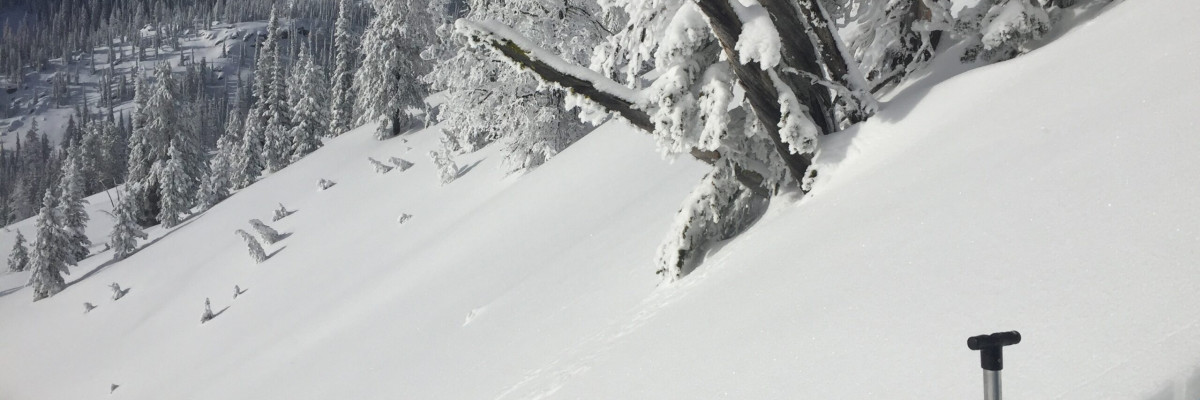The current avalanche danger is MODERATE in the west central Montana backcountry. Evaluate snow and terrain carefully; identify features of concern. Human triggered avalanches are possible.
Good morning, this is Travis Craft with the West Central Montana Avalanche Center’s avalanche advisory for January 12, 2017. This danger rating does not apply to operating ski areas, expires at midnight tonight and is the sole responsibility of the U.S. Forest Service.
Weather and Snowpack
Mountain temperatures range from -2 F to 16 F in the region. Winds are calm in the Bitterroot. Point Six, in the northern part of the advisory area, winds are reading 5 mph with gusts of 10 mph out of the W. The forecast area received 0 to 3 inches of new snow in the last 24 hours. The new snow had SWE’s ranging from 0 to .2 inches of water.
Tim and I toured in the Rattlesnake yesterday. We experienced excellent visibility and decreasing instabilities in the snow pack. John Lehrman, from Downing Mountain Lodge in the central Bitterroots, sent us observations finding the new snow is bonding well to the old snow surfaces.
The first avalanche problem is persistent slabs. There are two layers of concern that are on all aspects and elevations. The first layer is near surface facets located below a crust 30 cm from the surface. Tim and I were able to get this layer to propagate in only 1 of our ECT’s on a south slope. The basal facets are the second layer of concern. We were not able to get these to propagate in ECT’s, but they did fail in compression tests. The only way to assess these layers is to dig a pit and see if these layers are reactive.
The second avalanche concern is wind slabs. Our last storm consisted of dense snow accompanied with moderate winds. The wind was able to produce small wind slabs on the north aspects of the compass. These slabs are possible to trigger today.
Avalanche and Weather Outlook
We are entering a cold and dry period. Expect an increase in sunshine towards the weekend. Expect the danger rating to stay the same with the current forecast.
We are sponsoring a free weather lecture tonight at the University of Montana in the North Urey Underground Lecture Hall from 6:00 pm to 8:00 pm. Check our education page for more information.
If you are out in the backcountry please send us your observations, these are very helpful in producing the advisory.
I will issue the next advisory on Saturday, January 14, 2017.
Ski and ride safe.
























